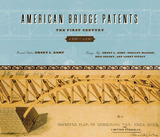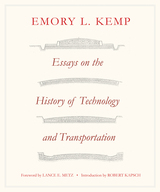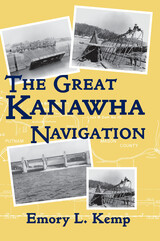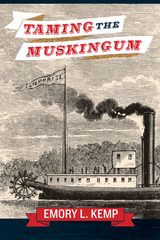
American Bridge Patents: The First Century (1790-1890), thoroughly illustrated with dozens of photographs and reproductions, presents the findings of a two-decade long study of several thousand pages of patent documents collected from the U.S. Patent Office. The essays in this volume offer readers tremendous insight into the creativity that characterized the evolution of bridge patents during this important and formative period of American engineering history. Of particular interest to the authors is the great variety of innovative and unusual designs that were accommodated by the then ambiguous patent law. Alongside these case studies, authors also address the Patent Office itself, whose processes regarding permissions were reformed in 1836, linking the evolution of patent law to the technology it managed.

In 1849, the new Wheeling Suspension Bridge was a triumph of engineering, the world's longest clear span bridge. The Wheeling bridge was also a landmark in the development of the American frontier, spanning the Ohio River to speed settlement and commerce in the Midwest and beyond. In 1999, historians, engineers, and industrial archaeologists from around the world met in Wheeling to celebrate the still-busy bridge's 150th anniversary. This book presents highlights of the conference, and points out the far-reaching effects of bridge-building.

Emory Kemp is the founder and director of the Institute for the History of Technology and Industrial Archaeology at West Virginia University, where he also served as a chair and professor of civil engineering and a professor of history. This collection of essays encompasses over fifty years of his research in the field of the history of technology.
Within these twelve essays, Kemp describes and analyzes nineteenth century improvements in building materials such as iron, steel, and cement; roads and bridges, especially the evolution of the suspension bridge; canals and navigable rivers, including the Ohio River and its tributaries; and water supply systems. As one of the few practicing American engineers who also researches and writes as an academic, Kemp adds an important historical context to his work by focusing not only on the construction of a structure but also on the analytical science that heralds a structure’s design and development.

The vision of a central waterway connecting tidewater Virginia with the Ohio River to rival the Erie Canal persisted for decades during the 19th century. The idea was at first fostered by the commonwealth of Virginia and then reincarnated as the Central Water Line, which was endorsed by the federal government. It was a grand vision, and though never implemented, the Great Kanawha Navigation nevertheless became a highly successful regionally controlled waterway that developed the rich resources of the Kanawha Valley. Emory Kemp has compiled a comprehensive history of navigation on the Great Kanawha River, detailing the industrial archaeology of this waterway from the early 19th century, and offering a detailed case study of a major 19th- and early 20th-century civil engineering project that would significantly advance the nation's industrial development.
Using the early unsuccessful attempts to connect the James River and western waters as a background, The Great Kanawha Navigation emphasizes technological innovation and construction of navigational structures on the river. With the river men championing open navigation during favorable stages of the river, and at the same time clamoring for controls to ensure navigation during periods of low flow, the Corps of Engineers responded with the concept of the movable dam to provide a cost-effective means of moving bulk cargo, especially coal, salt, lumber, cement, and chemicals, along nearly 100 miles of the Great Kanawha River. The Great Kanawha Navigation employed a series of ten locks and dams and became a laboratory for the use of movable dams in the United States, using first the French Chanoine shutter wicket dam and then the German Roller Gate dam. The innovative technology of the ten dams, the volume of freight carried and the management of the system by the Corps of Engineers made this one of the most significant public works in the nation. Each of the two systems provided cost-effective and environmentally sound means to tap the rich mineral resources of the Kanawha Valley. By any measure, the Great Kanawha Navigation has been one of the more successful ventures of the Corps of Engineers; Kemp has provided extensive photographs, illustrations, diagrams, and maps to further emphasize the construction of the various hydraulic structures. The result is an interesting and significant blend of biographical, technical, political, geographical, and industrial history that will delight historians of technology and the region.

READERS
Browse our collection.
PUBLISHERS
See BiblioVault's publisher services.
STUDENT SERVICES
Files for college accessibility offices.
UChicago Accessibility Resources
home | accessibility | search | about | contact us
BiblioVault ® 2001 - 2024
The University of Chicago Press









